The Sydney Opera House is a magnificent building, rightfully considered one of the wonders of the modern world. Located at a prominent location on a peninsula near Sydney’s harbor, it is reminiscent of a ship in full sail leaving harbor.
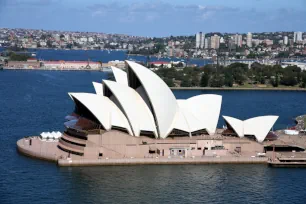
The audacious design by Jørn Utzon with enormous shell-like roofs was well ahead of its time. The building became an instant iconic landmark when it was completed in 1973 and has come to represent the whole country.
Conception
The idea for the construction of an opera house arose after the Second World War, when Australians realized that the country lacked a world-class opera house. In 1954 the government of New South Wales decided a new opera house was to be built at Bennelong Point, a spectacular location at the end of the Royal Botanic Gardens.
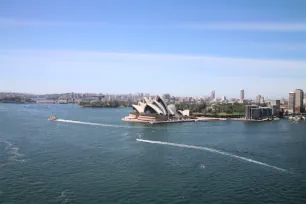
An international competition was announced, inviting architects to submit designs for a complex including two main halls, a restaurant and public meeting rooms.
In December 1956 a total of 234 architects from nine different countries had submitted designs. It is thanks to the Finnish-born architect Eero Saarinen that Jørn Utzon’s entry was chosen over more conventional designs. The visionary design by the Danish architect had already been dismissed by the assessment committee as ‘too ambitious’ but Saarinen, arriving late, convinced the committee to award Jørn Utzon first prize.
Construction
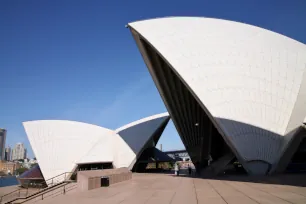
The construction was estimated to take about five years at a cost of A$7 million. Utzon, aware of possible technical problems since his design required advanced technology not yet available, requested additional time to tackle those challenges. Ignoring his request, the government pressured Utzon into starting construction in 1959, two years ahead of the architect’s proposed schedule.
The lack of preparation soon backfired. After the completion of the grand podium with an enormous, 86-meter-wide (282 ft.) stair, several years were spent reworking the design of the roof, something that should have been done before ground was broken. In 1961 Utzon revised the scheme for the “sails”, defining them as slices of a sphere with a 300 ft. (91 m.) diameter. The shells were built from pre-cast concrete sections clad with white glazed tiles.
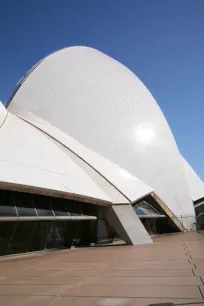
Unfortunately, the roof shells were too heavy for the supporting columns that were already built, so these were demolished and rebuilt. These and several other setbacks led to delays and increasing cost overruns. Utzon now faced a hostile press and a government reluctant to continue the project. Politician Robert Askin exploited the public’s fears about the project’s escalating costs. After he was elected premier of New South Wales in 1965, Askin attempted to force Utzon to reduce costs by withholding payments. In 1966 Utzon resigned and returned to his native Denmark. He never even returned to see his masterpiece completed.
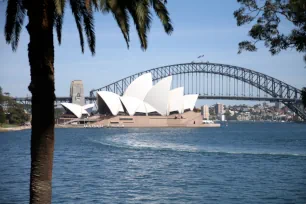
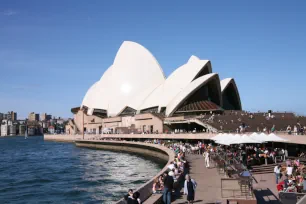
The construction of the Sydney Opera House was now handed over to a group of Australian architects. Fortunately, the exterior had already been completed by then so that the impact of the altered design on the overall structure was minimal. The project was finally completed in 1973. Its total cost amounted to an astronomical A$102 million, almost fifteen times the estimated budget.
Funding
Funds were largely provided by an ‘Opera House Lottery’. Since public fund-raising campaigns failed to produce sufficient funding, the lottery was created as an alternative source of funds in 1958, before construction had started. The lottery was prolonged as long as construction lasted.
A New Landmark
The financial problems and political disputes were soon forgotten after the Sydney Opera House opened on 20 October 1973. The opera house put Sydney on the world map, both architecturally and culturally. Its events attract some two million visitors each year, making it one of the world’s most popular cultural institutions.
- Next: Sydney Tower
- More Sights & Attractions in Sydney
